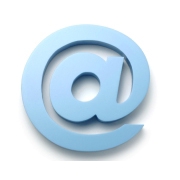Email Newsletters Should Be In Your Marketing Mix
by Susan Burnash (Marketing & Public Relations Specialist)
 As a Marketing consultant, I am often surprised by how few businesses actually utilize or understand the effectiveness of email newsletters (e-newsletters.) Done well, they keep you connected to customers and potential clients, help you establish and reinforce your organization's brand, and provide an ongoing touchpoint for driving repeat business, new sales, event attendance, donations, and more. But creating an effective e-newsletter and email campaign is a process and a formula.
As a Marketing consultant, I am often surprised by how few businesses actually utilize or understand the effectiveness of email newsletters (e-newsletters.) Done well, they keep you connected to customers and potential clients, help you establish and reinforce your organization's brand, and provide an ongoing touchpoint for driving repeat business, new sales, event attendance, donations, and more. But creating an effective e-newsletter and email campaign is a process and a formula.
I'd like to share with you some of the essential ingredients needed to ensure your e-newsletter is a marketing success.
1. Good Planning and Preparation - The best way to prepare for an e-newsletter campaign is to start by creating your own editorial calendar. Define your theme and topics in advance and then start an e-newsletter file to collect information you may want to include. Whether it is an electronic file or paper one, you should add content ideas, pictures, industry or business news, event information, or anything that might inspire you and benefit your readers for an upcoming issue.
2. Proper Brand Communication - The attributes that define your organization should set the tone for your e-newsletter. Done well, your e-newsletter should be able to communicate your brand through your writing style, voice, logo, colors, fonts and choice of images, and content. And if you are the brand, don't forget your picture. Readers like a face to connect with a name.
3. Relevant and Valuable Content - Relevancy is the number one ingredient for a successful e-newsletter. Relevant content can include: How To articles, Case Studies, Client Profiles, Industry or Business Trends, News Stories, Expert Advice. If it speaks to what your readers want or need to know, you can't go wrong. And mix it up! Write some content yourself, or hire a professional writer, and make sure to include content from, or links to, other experts in your field or business.
4. Balance Between Text and Images - Using images to support your topic is a good idea, but because many people have images turned off, it is critical that your e-newsletter communicates equally well without them. To test how your text works alone, turn off your images in your email client and send yourself a sample. If the text is as effective without the pictures as it is with, it will be effective to all email recipients no matter how they have their email options set.
5. Click-Through Opportunities - Because e-newsletters need to be short and easy to read quickly, providing brief articles with "to read more" or "for the complete article" click-through links is a great way to go. Summarizing or condensing an article serves as a teaser designed to drive readers to your website for a deeper experience. It also enables you to get valuable click-through information about your customers' behaviors and interest when you review your tracking reports.
6. Reader Engagement - E-newsletters should serve as a springboard for further conversation with your readers and you. There are many ways to create an interactive relationship. You should always include a Contact Us link to your email address or an online form that is easy to fill out. You can also utilize polls and surveys. All of these show your readers that you are interested in what they have to say and value their input. But make sure you respond in a timely manner. If you don't, you may be hurting yourself more than leaving these items out altogether.
7. Tracking and Reporting - Keeping your email database current and monitoring the behavior of your customers are the primary reasons for sending out an e-newsletter on a regular basis. If you aren't using email campaign software with tracking capabilities, you are totally missing the boat. Many of my clients use Constant Contact, My Emma, Blue Sky Factory, or Swiftpage. All provide self-service options for those that want to manage their campaigns in-house or they can provide full-service options such as creating custom template designs, executing your campaign, managing your database, and reporting out results through campaign tracking.
About the Author: Susan Burnash is the owner of Purple Duck Marketing in Kirkland, WA. Her company focuses on marketing, public relations, and video production for businesses and nonprofits. To contact Susan please email susan@purpleduckmarketing.com or visit www.purpleduckmarketing.com.
|
|
|









 As a Marketing consultant, I am often surprised by how few businesses actually utilize or understand the effectiveness of email newsletters (e-newsletters.) Done well, they keep you connected to customers and potential clients, help you establish and reinforce your organization's brand, and provide an ongoing touchpoint for driving repeat business, new sales, event attendance, donations, and more. But creating an effective e-newsletter and email campaign is a process and a formula.
As a Marketing consultant, I am often surprised by how few businesses actually utilize or understand the effectiveness of email newsletters (e-newsletters.) Done well, they keep you connected to customers and potential clients, help you establish and reinforce your organization's brand, and provide an ongoing touchpoint for driving repeat business, new sales, event attendance, donations, and more. But creating an effective e-newsletter and email campaign is a process and a formula.